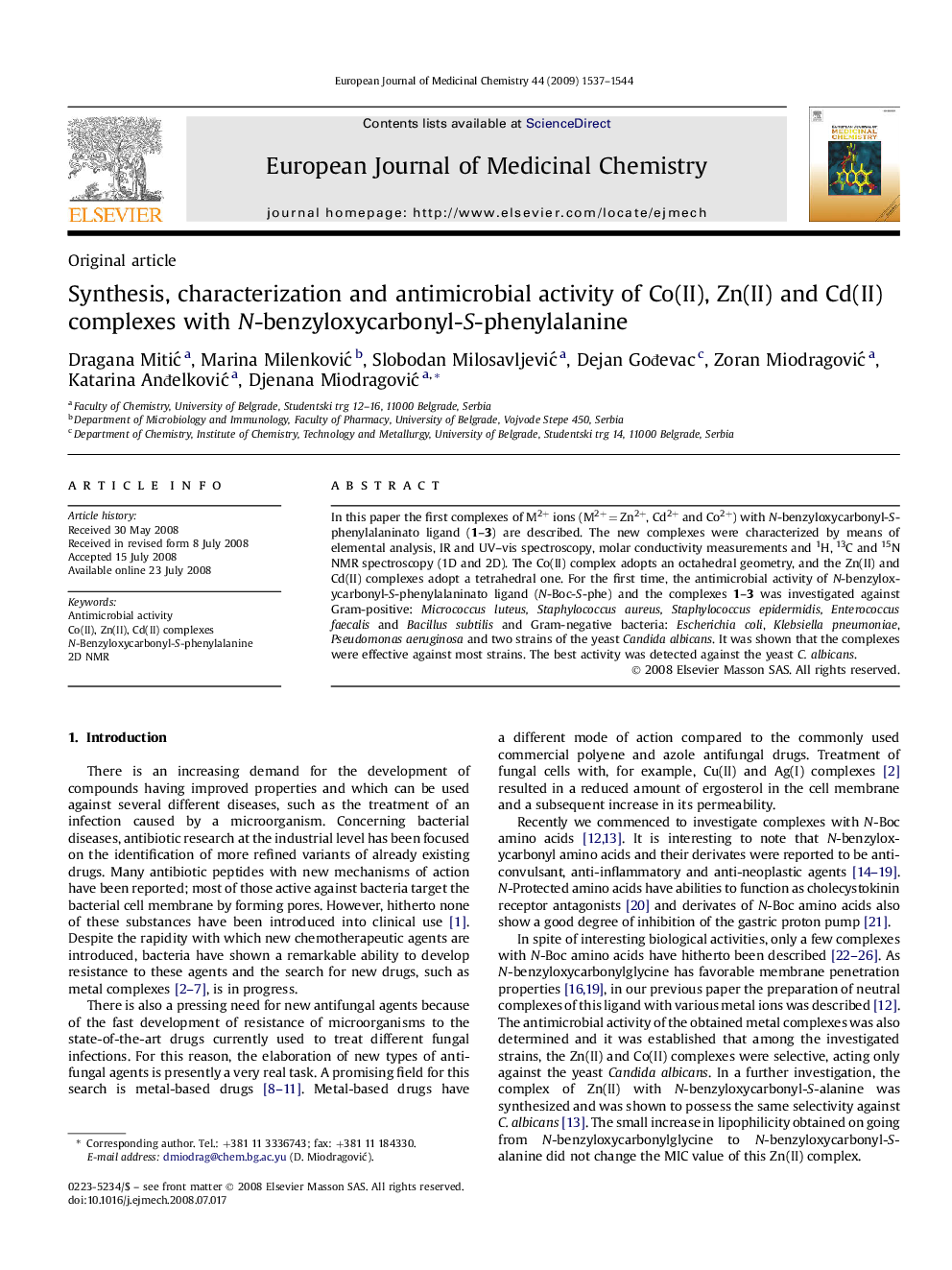| Article ID | Journal | Published Year | Pages | File Type |
|---|---|---|---|---|
| 1395180 | European Journal of Medicinal Chemistry | 2009 | 8 Pages |
In this paper the first complexes of M2+ ions (M2+ = Zn2+, Cd2+ and Co2+) with N-benzyloxycarbonyl-S-phenylalaninato ligand (1–3) are described. The new complexes were characterized by means of elemental analysis, IR and UV–vis spectroscopy, molar conductivity measurements and 1H, 13C and 15N NMR spectroscopy (1D and 2D). The Co(II) complex adopts an octahedral geometry, and the Zn(II) and Cd(II) complexes adopt a tetrahedral one. For the first time, the antimicrobial activity of N-benzyloxycarbonyl-S-phenylalaninato ligand (N-Boc-S-phe) and the complexes 1–3 was investigated against Gram-positive: Micrococcus luteus, Staphylococcus aureus, Staphylococcus epidermidis, Enterococcus faecalis and Bacillus subtilis and Gram-negative bacteria: Escherichia coli, Klebsiella pneumoniae, Pseudomonas aeruginosa and two strains of the yeast Candida albicans. It was shown that the complexes were effective against most strains. The best activity was detected against the yeast C. albicans.
Graphical abstractThe antimicrobial activity of N-benzyloxycarbonyl-S-phenylalanine and the complexes was investigated against eight bacteria and two strains of Candida albicans. The best activity was detected against the yeast C. albicans.Figure optionsDownload full-size imageDownload as PowerPoint slide
